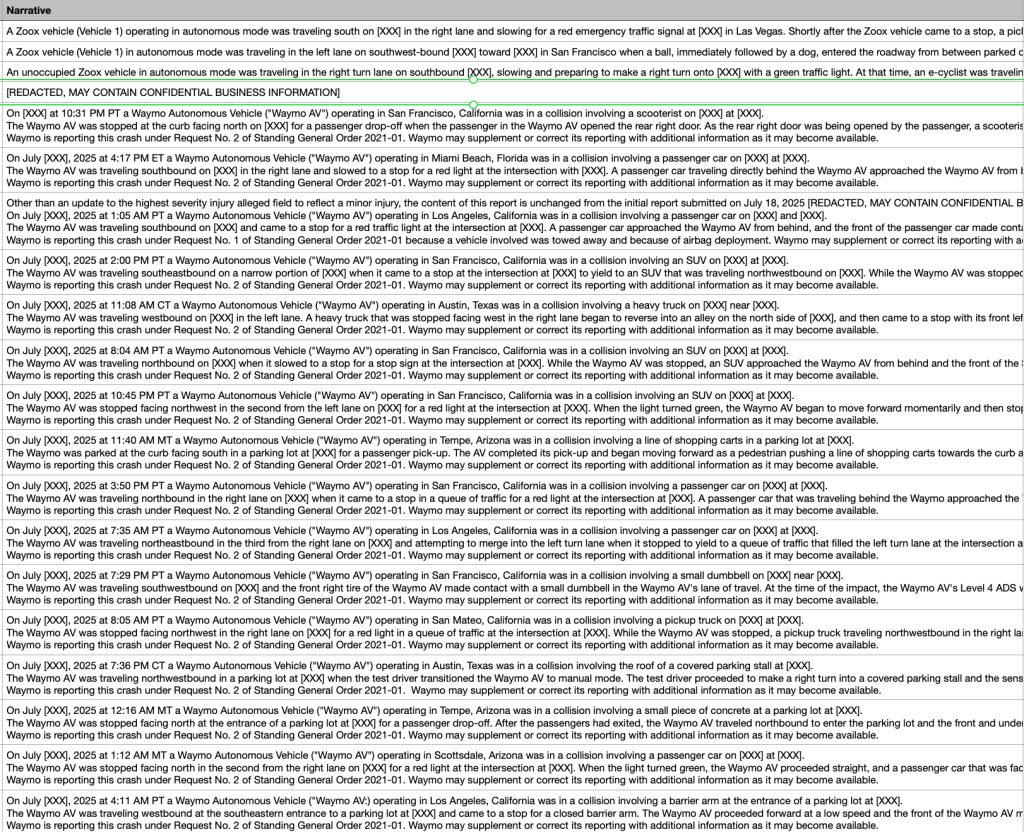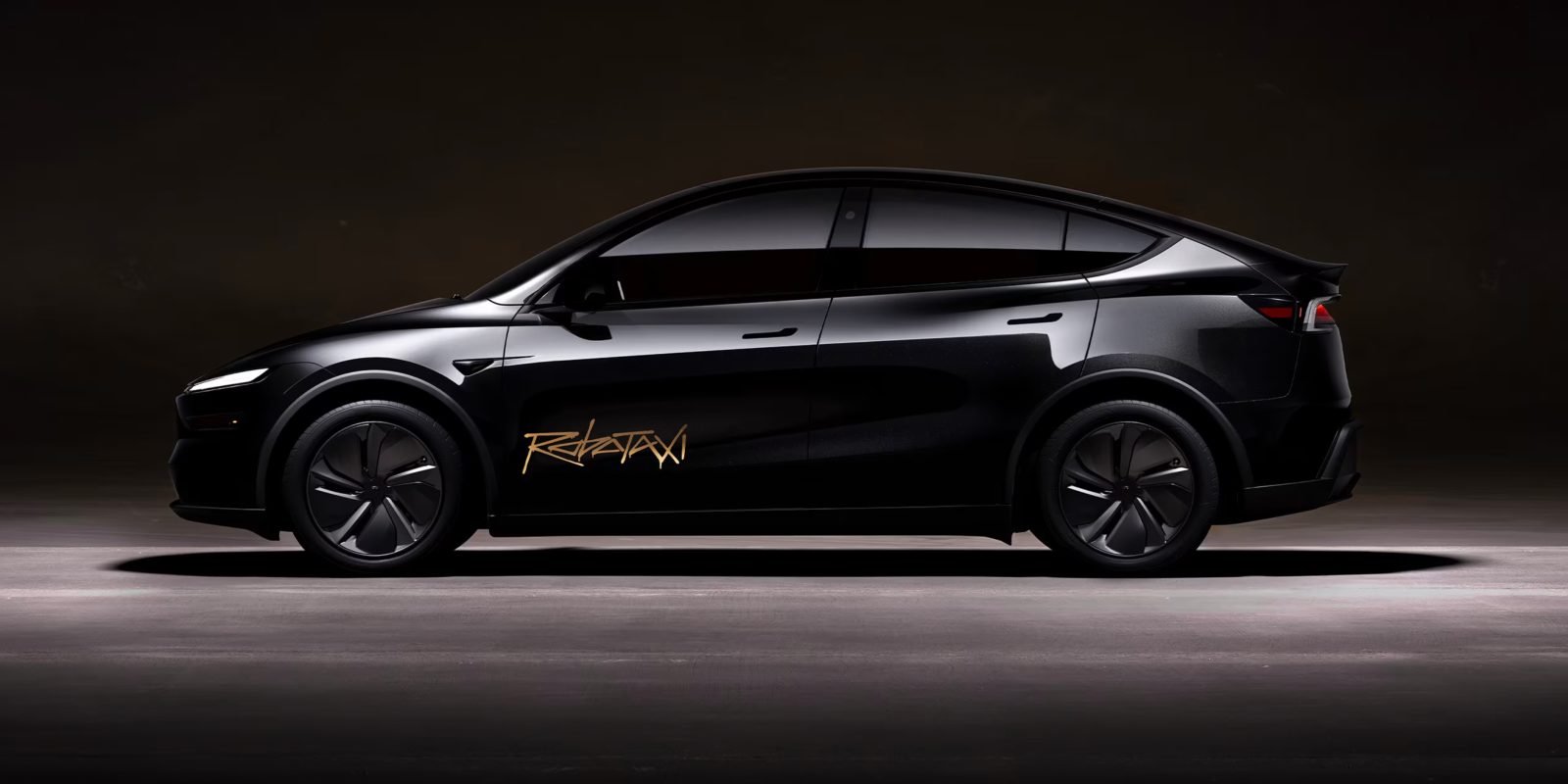Tesla tries to hide the details of three separate accidents involving its Robotaxi service in Austin, Texas, despite having only two months of service with a small fleet.
Due to the standing general order 2021-01 (“SGO”), car manufacturers must report to NHTSA crashes involving their autonomous driving and advanced driver assistant systems within five days of notified them.
We have previously reported on Tesla-leading crashes for Level 2-Driver Aid Systems with thousands of reported crashes, but the car manufacturer never reported any automated driving accidents because it never had a system that would qualify as a level 3-5 SAE-Automatized driving system, despite the name of its “full self-driving” software package.
This has changed with the launch of Teslas Limited Robotaxi service in Austin, Texas.
Now Tesla has reported its first three accidents involving an “automated driving system” through its new Robotaxi effort:
| Report ID | Same event -id | Model | Model year | Date of event | Incident time | Road type | Harms severity* |
|---|---|---|---|---|---|---|---|
| 13781-11507 | 346E79B6ABC2CA | Model Y. | 2026 | Christmas -2025 | 03:45 | Street | Property damage. No wound reported |
| 13781-11459 | 8578FBC6EF74C60 | Model Y. | 2026 | Christmas -2025 | 12:20 | Street | Less without hospitalization |
| 13781-11375 | B5D3E7BB23A3388 | Model Y. | 2026 | Christmas -2025 | 15:15 | Intersection | Property damage. No wound reported |
All accidents happened in July, during Tesla’s first month with the operation of his Robotaxi service in Austin, Texas.
At least one injury was reported for one of the crashes, but Tesla shows it as “less”. None of the accidents are examined by the authorities based on the information that Tesla has released.
Tesla has not released many details of its Robotaxi effort, but the car manufacturer is estimated to have only approx. 12 vehicles in its Robotaxi fleet in Austin from July, and it offered rides to only a limited group of users, mostly Tesla -influences and shareholders who are unused by criticizing the company.
As it does with its ADA crash, Tesla hides most details of the crash. Unlike its competitors who openly release narrative information about the events, Tesla edits Al the narrative of all his crash reporting to NHTSA:

It makes it difficult to get any context about the accident and assess the level of responsibility of the automated driving system.
Unlike competitors, such as Waymo, Teslas Robotaxi still uses a “security monitor” sitting in the front seat with a finger on a killing contact ready to stop the vehicle. Despite this extra security level, Tesla is obviously still experiencing crashes.
CEO Elon Musk has claimed that Tesla would remove the security monitor at the end of the year and deliver his “full self -driving” lifts to customers, but he has never shared any data proving that Tesla’s automated driving system is reliable enough to achieve it.
NTHSA also examines Tesla for reporting degradation data.
Electek Tag
The fact is that Tesla has never released any essential data to prove that its system is reliable. Never.
The only data Tesla has shared are the cumulative mileage driven by the fleet of autopilot and full self -driving, but it is with a human driver on the steering wheel at all times.
Tesla never shared liberation data despite the fact that they publicly claim more improvement factors in miles between liberations.
How can you trust a company that operates like this?
In addition, it edits the most critical details of crashes involving its driver assistant and automated driving systems.
It is not the type of opacity I will see from a company that implements potentially dangerous, but also potentially life -saving, technology.
Unfortunately, I have lost hope that regulators will do something about this soon. It will probably take more tragic accidents for them to act.
FTC: We use income that earns Auto -connected links. More.
